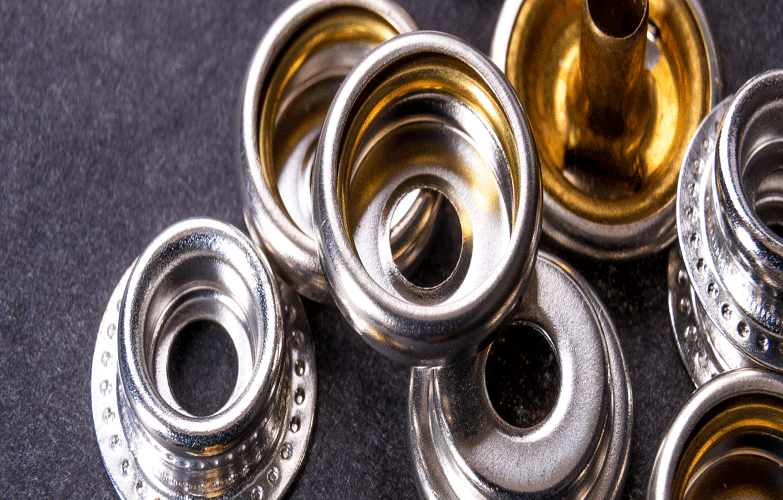An Introduction to Electroplating and Metal Finishing
Electroplating and metal finishing are vital processes in various industries, ranging from manufacturing and automotive to electronics and jewellery. These […]

Electroplating and metal finishing are vital processes in various industries, ranging from manufacturing and automotive to electronics and jewellery. These techniques enhance the appearance, durability, and functionality of metal surfaces. In this post, we will explore the fundamental principles, applications, and benefits of electroplating and metal finishing.
Electroplating: A Brief Overview
Electroplating involves depositing a layer of metal onto the surface of an object through an electrochemical process. This technique utilizes an electrolytic cell, where the object to be plated acts as the cathode and a metal electrode acts as the anode. The object and the metal electrode are immersed in an electrolyte solution containing metal ions. As an electric current is passed through the system, metal ions are reduced at the cathode, forming a layer of metal coating on the object’s surface.
Metal Finishing Techniques
Metal finishing encompasses various processes that modify the surface properties of metal objects. Some common techniques include:
a. Plating: Electroplating is the most widely used method in metal finishing. It provides a protective or decorative coating of metal to enhance corrosion resistance, improve conductivity, or impart a specific appearance.
b. Anodizing: Anodizing is an electrolytic process used primarily on aluminum and its alloys. It creates a controlled oxide layer on the metal’s surface, increasing corrosion resistance, improving durability, and allowing for color customization.
c. Passivation: Passivation involves treating stainless steel with an acid solution to remove iron contaminants from the surface and enhance its resistance to corrosion.
d. Powder Coating: Powder coating involves applying a dry powder to a metal surface, which is then cured under heat, forming a durable and protective layer. It offers excellent resistance to abrasion, chemicals, and UV rays.
Applications of Electroplating and Metal Finishing
The applications of electroplating and metal finishing are vast and diverse:
a. Automotive Industry: Electroplating is extensively used in the automotive sector for decorative chrome plating, corrosion protection, and enhancing wear resistance of various components.
b. Electronics and Electrical Industry: Printed circuit boards (PCBs) often undergo electroplating processes to apply a layer of copper for improved conductivity. Metal finishing is also crucial in electronic connectors, switches, and other components.
c. Aerospace and Defense: Metal finishing plays a crucial role in aerospace and defense applications by providing corrosion protection, enhancing conductivity, and improving the appearance of critical components.
d. Jewelry and Fashion Accessories: Electroplating allows the application of decorative finishes, such as gold, silver, or rhodium, on jewelry, watches, and fashion accessories.
Benefits of Electroplating and Metal Finishing
Electroplating and metal finishing offer numerous benefits:
a. Enhanced Durability: Metal coatings and finishes provide protection against corrosion, wear, and environmental factors, increasing the lifespan of objects.
b. Improved Appearance: Electroplating and metal finishing techniques allow for decorative finishes, providing a visually appealing appearance and aesthetic customization.
c. Increased Functionality: Metal coatings can improve electrical conductivity, solderability, and lubricity, making components more efficient and reliable.
d. Environmental Sustainability: Many metal finishing processes are now adopting environmentally friendly practices, such as using non-toxic chemicals, recycling water, and reducing waste generation.
Electroplating and metal finishing are crucial techniques in various industries, offering benefits like enhanced durability, improved appearance, and increased functionality. From automotive and electronics to aerospace and jewelry, these processes have a wide range of applications. As technology advances, the field of electroplating and metal finishing continues to evolve, providing innovative solutions for the ever-growing demand for high-quality surface treatments.